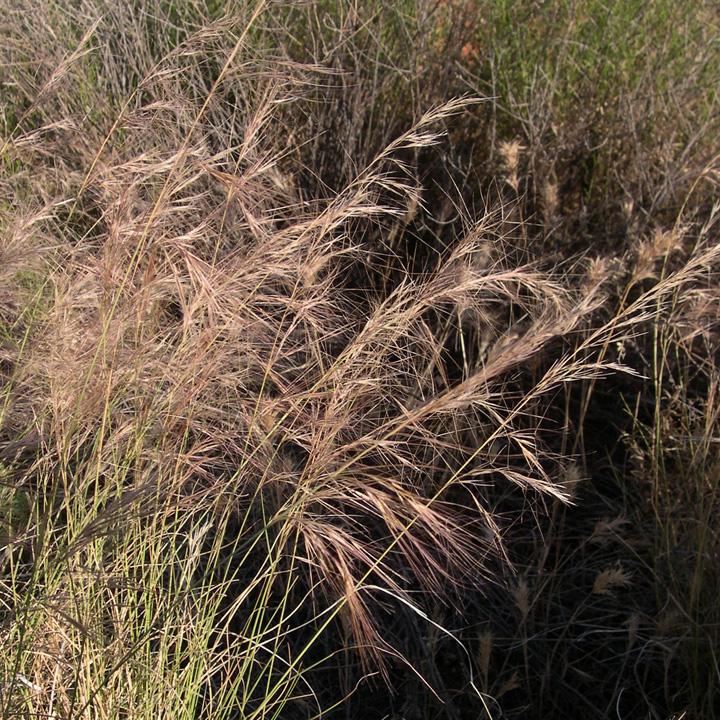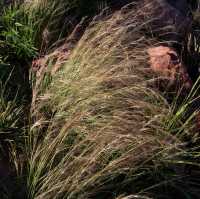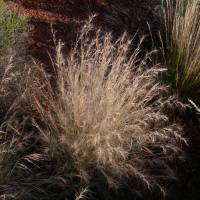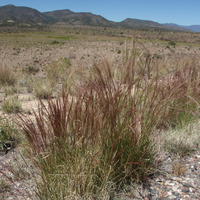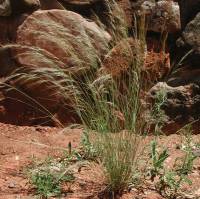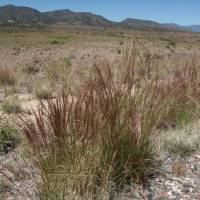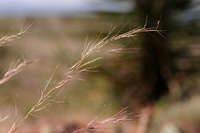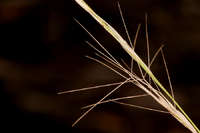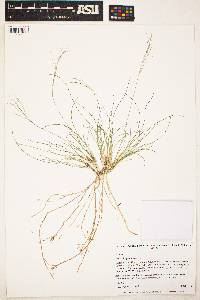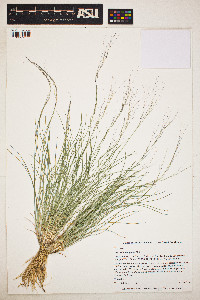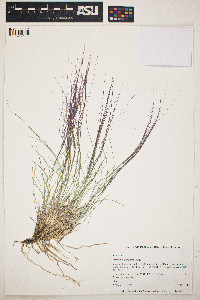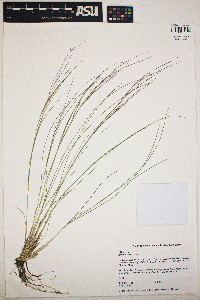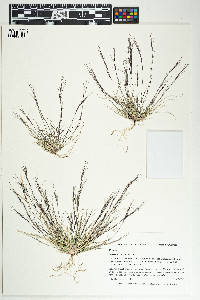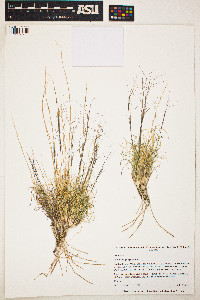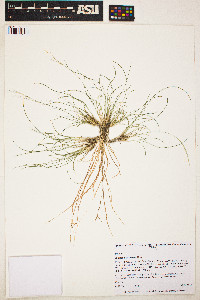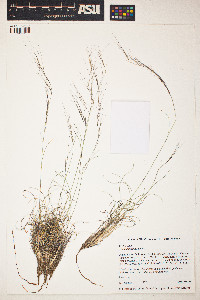- Home
- Search
- Images
- Datasets
- Sample Use
- How to Cite
- Additional Information
- About NEON
- NEON Data Portal
- ASU Biocollections
- About Symbiota
|
|
|
|
Family: Poaceae
purple threeawn, more...purple threeawn
[Aristida brownii Warnock, moreAristida purpurea var. laxiflora Merr., Aristida purpurea var. perplexa Allred & Valdés-Reyna, Aristida roemeriana Scheele] |
Plants perennial; densely cespitose, without rhizomes. Culms 10-100 cm, erect to ascending, usually unbranched. Leaves mostly basal or mostly cauline; sheaths shorter or longer than the internodes, glabrous, not disintegrating into threadlike fibers at maturity; collars glabrous, or sparsely pilose at the sides with straight hairs; ligules less than 0.5 mm; blades 4-25 cm long, 1-1.5 mm wide, tightly involute to flat, usually glabrous, sometimes scabridulous abaxially, gray-green, lax to curled at maturity. Inflorescences usually sparingly branched panicles, occasionally racemes, 3-30 cm long, 2-12 cm wide, with 2 or more spikelets per node; nodes glabrous or with straight, about 0.5 mm hairs; primary branches 3-6 cm, appressed to divaricate, varying sometimes within a panicle, stiff to flexible, bases appressed or abruptly spreading, usually without axillary pulvini. Spikelets divergent or appressed, with or without axillary pulvini. Glumes usually unequal, lower glumes shorter than the upper glumes, sometimes subequal, light to dark brown or purplish, glabrous, smooth or scabridulous, 1(2)-veined, acuminate, unawned or awned, awns to 1 mm; lower glumes 4-12 mm; upper glumes 7-25 mm; calluses 0.5-1.8 mm; lemmas 6-16 mm, glabrous, scabridulous, or tuberculate, whitish to purplish, apices 0.1-0.8 mm wide, not beaked or the beak less than 3 mm, junction with the awns not conspicuous; awns (8)13-140 mm, ascending to divaricate, not disarticulating at maturity; central awns thicker than the lateral awns; lateral awns (8)13-140 mm, usually subequal to the central awns, occasionally less than 1/3 as long as the central awns; anthers 3, 0.7-2 mm. Caryopses 6-14 mm, tan to chestnut. 2n = 22, 44, 66, 88. Aristida purpurea is composed of several intergrading varieties. Perennial; culms 2-5 dm, very numerous in large tufts; lvs mainly basal, very narrow, usually involute; panicle (excluding the awns) 3-10 cm, narrow or spike-like, with short ascending or appressed branches; first glume 8-13 mm; second glume 15-23 mm, much exceeding the lemma; awns essentially similar and equally divergent, 4-7 cm; 2n =22. Dry prairies and plains; Minn. and Io. to Wash., Calif., and n. Mex. Ours is the widespread var. longiseta (Steud.) Vasey. (A. longiseta) Gleason, Henry A. & Cronquist, Arthur J. 1991. Manual of vascular plants of northeastern United States and adjacent Canada. lxxv + 910 pp. ©The New York Botanical Garden. All rights reserved. Used by permission. FNA 2007, Allred 1984, Gould 1980 Common Name: purple threeawn Duration: Perennial Nativity: Native Lifeform: Graminoid General: Erect, small, perennial bunchgrass, elliptical stem, can be (but not often) branched at lower nodes, 30-60 cm tall. Vegetative: Blades 0.5 mm wide, 2-8 cm long, rolled, curved, rough, ribs indistinct, margin occasionally hairy, sheath smooth, round, open, ligule ciliate, about 0.5 mm long, collar with hairy margin, bearded. Inflorescence: Panicles 10-25 cm long, flexuous and curving in fruit, weighed down, spikelets reddish-violet; glumes very unequal, lower glume 6-7 mm long, upper 12-15 mm.Lemma 10-11 mm to base of awns; awn column 1-2 mm long, awn 3-4.5 cm long, fine and delicate, deeply colored. Ecology: Rocky or sandy plains and slopes, found commonly along roadsides from 1,000-7,000 ft (305-2135 m); flowers April-October. Distribution: Most of western US south to c MEX. Notes: A. purpurea encompasses a diverse complex of intergrading varieties, many of which are so distinct as to appear as separate species. The complex in our region can be distinguished from other species by the following characteristics: perennial bunchgrass with rolled, thread-like and often curved blades, a ligule with conspicuous hairs, panicles for the most part condensed or contracted and without axillary pulvini (small appendages in the branch axils that force branches open) and purple awns 2-5 cm or even longer, which are equal to almost equal. Awns can cause abscesses to the mouths and nostrils of grazing animals and injury to skin when caught on fur. Ethnobotany: Unknown Etymology: Aristida is from the Latin arista for awn, while purpurea is Latin for purple. Synonyms: None Editor: SBuckley 2010, FSCoburn 2014, AHazelton 2015 |
|
|
|


